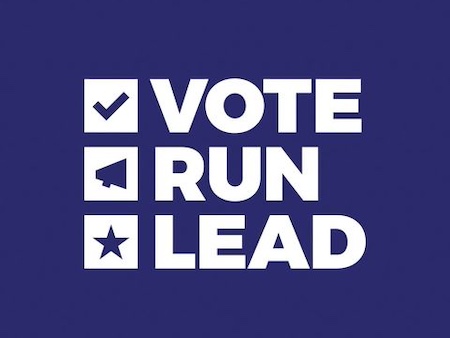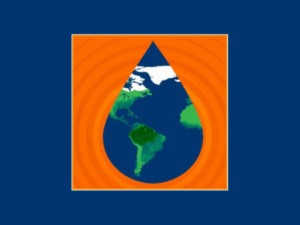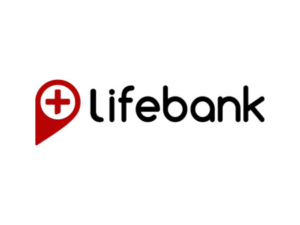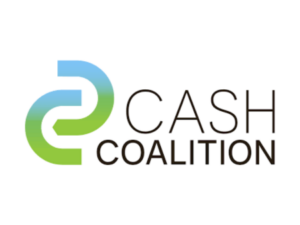Vote Run Lead trains women to run for political office and win. Unleashing the political power of women, trainees go on to be elected to and serve on city councils, county boards, state houses, supreme courts, and Congress.
Erin Vilardi of Vote Run Lead spoke with Ashley Hopkinson on January 25, 2024. Click here to read the full conversation with insights highlighted.
Ashley Hopkinson: Can you start by introducing yourself and talk a bit more about the problem Vote Run Lead is working to solve and how you go about solving it?
Erin Vilardi: I am Erin Vilardi, the founder of Vote Run Lead and Vote Run Lead Action.
I started doing this work 21 years ago as an intern at an organization called The White House Project. The problem that the White House Project was trying to solve was the cultural norms of not looking to women as leaders to solve problems. Two decades ago, it was ‘how do we shift the culture and numbers of women in leadership to solve the most pressing problems?’
There we focused on three pieces: pop culture & how to change the narrative, women in corporate leadership, and women in politics. I started and ran Vote Run Lead there as the political program of The White House Project.
Ten years later, I took it out on my own as a standalone organization. By then, the problem was different. I was creating a full infrastructure for Vote Run Lead to create a reflective democracy.
In just a short decade, our work at The White House Project and the national conversation around Lean In alongside the number of women presidents & prime ministers around the world was shifting the narrative. Research coming out places like Deloitte & other big global companies were showing that we needed women leaders on boards and all other things.
But politically, we were stuck. We were still the same old, same old numbers. So in 2014, when I took Vote Run Lead out as a standalone organization, we focused on reflective democracy in terms of folks with color and folks in the margins. Women are 51% of the population, yet we are nowhere near having 51% female elected officials in the USA. A reflective democracy that is formed by the people could solve our most pressing problems.
We believe in women’s participation; not just because of the role model effect but because it’s fair, just & reflective. Women bring a diverse set of perspectives and have a tried & true track record of doing the business of government differently, of campaigning differently. So, we’re bringing those skills in to fully see the diversity of women in leadership reflected in our democracy.
Ashley Hopkinson: Who do you feel like you’re serving and how do you engage with them?
Erin Vilardi: There are so many women — especially women of color — who have community level leadership, who have community capital, who have great expertise & experience, yet who are not seen or tapped by the electoral & political system to use that capital for our democracy. Our direct audience are those women; the ones that raise their hand and say, “Yes, I want to do this.” This has been a growing demand especially since the 2016 presidential election in the USA.
But prior to that, we had to create demand. We sought out the populations of women who we thought would be awesome for the state legislature. Then, about two years ago, we made a strategic shift at the organization to focus on a particular office: the legislature.
Right now, we are serving the fifty states by saying, “We want to put a majority of women in your legislatures.” We believe that if we can get 51% – 60% – 70% of women in legislatures, that states would be better for it. Not just women & girls, but for men & boys and our gender expansive community. We know that when women legislate, budgets get passed on time, resources get allocated differently, and priorities shift around families. Women don’t just get put on the agenda, they’re put on the top three. We’re serving these women because we believe they’re levers for serving the larger community in the state itself.
Ashley Hopkinson: What makes the approach of Vote Run Lead distinctive? A lot of organizations are working toward wanting reflective democracy. What makes you stand out in this field?
Erin Vilardi: First, all the partners are important. I think that is a narrative shift. I was part of a coalition a couple of years ago where these different groups were doing what we call ‘pipeline work’ or ‘candidate development’ supported by the Rockefeller Brothers Fund. We found that women’s groups served a diverse population — whether that was Latinas, Vote Run Lead, women under 30, etc. — and we were not overlapping. It was a very small number that were talking about training, or doing two or more of our organizational offerings. What’s awesome to know is that there is demand, and there’s something that resonates with different identities that feels like it is for them. It’s important that we all exist in the field.
In comparison to the billions of dollars that are spent on federal level campaigns or the prioritization of reproductive rights in women’s communities, it’s a really small number in this candidate field. The more the merrier, for sure.
But, our unique contribution is twofold. First is both our method and our mantra. It’s called “Run as You Are.” We have a very unique perspective that we’re not trying to reshape you. We are not trying to mold you into the political leaders that you see today. You are already a diamond. We’re not trying to polish you into something else; we’re just finding you the right setting.
Lived experience is everywhere. There are things you have done in your life that are translatable to the electoral system because you are your own constituent & your community looks like you.
We’re overpopulated with lawyers and business folks in our legislatures and public offices. Your profession, your experiences as a single mom, your chatter as a hairdresser & running a small business, make you uniquely qualified to bring that into a legislative body.
We can teach you how to campaign, how to speak publicly, how to raise funds; but we require you to understand your own leadership & to have a fire in your belly. The Run As You Are methodology is really, really powerful. It just resonates. It resonates strongly with women of color & folks in the LGBTQI+ community that we’re not going to tell you how to dress. We’re not going to tell you to wear lipstick or not. That is a part of who you are, and you make the choices about how you want to show up.
The second piece that makes us different is that we are data-driven. We have mapped the number of women and women of color in our state legislatures. We know the seats where women have never ran for office. We know how many seats it will take to get to that 51% and our efforts are concerted around that. We have folks on the ground in nine states trying to prove the model. Through a variety of different interventions in each state, we will move the needle to get women who are pro-democracy, feminists & anti-racists in our legislatures.
It’s pretty unique to be really focused on a singular office and to be on the ground to understand the district by district strategy on how to get there. We continue to do our national trainings. We have a great offering in something called vrlhq.org that is the headquarters of our curriculum. It’s free and accessible to any woman.
But our woman power or human power on the staff side is working towards seeing a world that we have not seen yet: states that have majority women in their legislatures and what that impact might be. We’re not here for incremental change. We are literally trying to be the most.
Ashley Hopkinson: How do you measure success? What is the evidence that you’re making progress toward the markers that you’ve set?
Erin Vilardi: Before the shift to the state legislatures, it was, How many women are we reaching? What is the diversity across geography, race and ethnicity, orientation, identity? Are we bringing in a new class and crop of folks into the political arena? How many are running and how many are winning? They were great metrics. We were successful in that. But after doing this work for two decades, it was like, “What am I here for?
I’ve always believed that the world would be a better place if women were in charge. My sister subscribed me to Ms. Magazine while I was in seventh grade; she had gone off to college and discovered that there’s a whole other world out there. With that belief, I wondered “What’s the fastest way for me to get women in charge?”
I looked at school boards. I looked at legislatures. I looked at these different offices. There was real feasibility in the 7,383 seats in the legislature. All fifty states used that model. There’s real power in that. It is a very feasible and realistic plan that by 2030, we might see five to seven states in this country with a majority of women, then you’re going to see something different.
I posit that you’re going to see voting rights protected, that reproductive health protected, that you’re going to see a different kind of constituent service. I posit that you’re going to see more efficiency. If you look at the research — including current examples of states like Minnesota & Michigan, who are mostly democratic, that saw surges of women & women of color in their legislatures — you see real progress.
You see these workhorse legislative sessions where they’re putting out bill after bill after bill that have been sitting on the docket for maybe five, seven, or even ten years.
Ashley Hopkinson: That’s a really profound point of what a certain change can just build and build and build and build and create all this momentum. And before you know it, you can have some real system change happening.
Erin Vilardi: Right. And I think you’re going to see it regionally. I don’t think you’re going to see it in the South as quickly as you’re going to see it in the Pacific Northwest. There’s regionalism in the USA, so we have to have different strategies.
Right now, we are going after the states that are the closest, if you will, so that we can get over the finish line. We want to show the model. We operate in Georgia, and we are hoping to operate in Tennessee next year, but that will be a 10-15 year plan, not by 2030.
Ashley Hopkinson: What have you learned through years of doing this work that you think is effective? Something that somebody else can learn something valuable from?
Erin Vilardi: I think radical focus is hard but so necessary. I could have chugged along continuing to build out Vote Run Lead as a training organization for all women because I never wanted to say no to anybody who wanted to come to a training. We still serve the larger population by providing women resources on how to run for different offices but it can feel overwhelming if we’re trying to do all things for all people.
We build these nonprofits with a big, big mission, but we actually, we have to achieve. We have to make material differences in the lives of the people that we are serving.
In shifting from “increasing women’s leadership in the political space” to “we are going to get a 51% female and women majority in our state legislatures by 2030” we got more funding. We got more strategic in our thinking. Really knowing what the thing is that you can do to change the world, then continuing to build on that. If we’re successful with the legislature, “Okay, Congress, here I come. Okay, city council, here I am.” So that has been a huge lesson for me.
And the other thing is that you really have to trust yourself. When I took Vote Run Lead on its own, it was not a really opportune time for a lot of reasons. It was a decision I had to make that cost me financially. There was a lot of risk if it failed. But you have to really trust what you know even in the low points and continue to trust in yourself.
So those two things, radical focus and trusting yourself.
Ashley Hopkinson: Another thing that can be helpful is to talk about a story of impact that you feel illustrates the work that you’re doing. Is there a story you can share that reflects why you’re doing what you’re doing?
Erin Vilardi: Minnesota. I’ve been working in Minnesota for most of my career. Vote Run Lead has been there both during The White House Project days, and now in the new standalone iteration.
Before 2022, Minnesota had never had a black woman in its state senate in its 164 year history. During the 2022 election, three black women were elected to the state senate. All three are a part of our community, our alumni — we loosely call them — and our programs. It’s also the most racially diverse class of women in the Minnesota legislature, both the House and Senate. It changes how government is working.
There are about 18 states with no black women in the state senate. That mirrors the US Senate with only one black woman, Laphonza Butler, after Kamala Harris’ ascension to the vice presidency. In a country that says black women are the backbone of democracy, we are not doing enough to serve black women in all leadership positions where they need to be represented. State senates are one of them. Those women went through other programs too. So that feels like a success, a shared success. They’re changing the game. They’re changing the game in Minnesota.
Ashley Hopkinson: I love that. And I think that’s part of a reflection to the earlier point of what makes an organization distinctive; if everyone is very focused on their particular role, you get to be a part of a huge kind of sweeping change, which is really wonderful.
So this is a little bit of a pivot. We’re talking about what’s flowing, but we also learn from things that we try and don’t meet our expectations. Can you describe something that you’ve tried that didn’t work yet taught you an important lesson? What did it teach you? What did you learn from it?
Erin Vilardi: I think organizational culture is so important. Honestly, when I first started out in my career, I was like, “What is this organizational culture thing?”
For social entrepreneurs that have a vision of building something and can clearly see it, I did not always bring other people along. Somebody may be enthusiastic about the vision, but it doesn’t mean that you’re aligned in your expectations of how you’re going to do the work and what kind of culture you’re creating.
Leadership and management are two different things. It’s been a great and bumpy journey of being a social entrepreneur who has stuck with my organization. I didn’t start something and leave. There’s been a lot of evolution for me as a leader and a manager as I’ve had to play very different roles at each stage of the organization.
You can read all the books and get advice — and I have an amazing coach and all that good stuff — but you have to go through it. You got to go through it and see how you’re going to show up. That has been a learning lesson. Everyday that feels like a learning lesson.
Some big picture stuff is I tried to show demand. One time, I did this twenty city training across different states. We did a thousand people in-person, three thousand people online. I swung big.
But there wasn’t a philanthropic audience for it. So that was a real lesson.
That lesson helped me shift to say, “I don’t think I’m going to change philanthropy to see women’s political participation as this thing that needs to be five X’ed in investment by showing demand.” It didn’t work. It got talked about as sort of the same old, same old, and I was like, “We just did something historic here!”
We had women from all over the country — Fayetteville, Arkansas; Seattle, Washington; New York, New York; Rochester, Minnesota — raising their hands to run for public office in a way that was very tangible, not just signing up on an email list. About 4,000 people were taking collective action on a single day to learn how to run for office.
I got one piece of press off of it.
So I was like, “Okay, I don’t have an audience for this right now. I don’t have a philanthropic home for this. I swung the bat: used up a lot of my resources — financially, physically, staffing. It was a huge endeavor, and it didn’t get the reception.
It was an amazing thing, but it turned out to be the wrong strategy. Your strategy has to have a home. Your strategy needs resources.
We had to really pause and say, “Well, that was a beautiful thing. Was it the right strategic choice for Vote Run Leads?” So that was a big learning lesson. I don’t regret it because you learn from it and because it was an amazing thing for those women. But it depleted the resources of the organization in a way that we had to make really hard choices after that.
Ashley Hopkinson: Are there challenges that you’ve faced or you’re currently facing that you haven’t yet been able to solve for?
Erin Vilardi: We’re having a couple of challenges. One, how do you sit at the intersection of feminism, pro-democracy, and anti-racism in a non-partisan way?
I don’t care what your political party is, we’re leading with our values, but the landscape of the USA is hyper-partisan right now. I am not an arm of the Democratic Party; I am not anti-Republican Party. I’m trying to move us beyond this in how we look at women’s power.
We cannot look at women’s power through the lens of Republican and Democratic partisan affiliation. I’ve dedicated my career to that. We can’t assume that if you’re a feminist, you’re just Democrats. I know plenty of Democrats that are not feminists, and I know plenty of Republicans who are feminists. The national hyper-partisanship conversation is very heavy.
Right now, we’re working on a lot of anti-violence and anti-harassment curriculum. Nobody cares who your party is for that. If you’re a woman of color, Republican, or you’re even Democratic men, everybody is getting harassed, everybody. This is a problem that if we had listened to women as the canary in the coal mine, we would’ve had more resources. We have moved to a cultural point; the Brennan Center is putting something out about this pretty soon.
We’re not interested in the partisan stuff, but we live in the reality of a hyper-partisan America. It’s a tough climate for our staff to be in, but that’s part of an ongoing struggle of leading with our values.
The second thing is that we’ve scaled. I went from a staff of 12 to 27 and grew our budget by 83% in the last year. Everyone wants to scale, but the skills that got us here are not the skills that you need for this moment, so there’s a challenge of constantly learning from a management perspective of the different set of challenges and opportunities that come at each scale.
While scaling, you’re under constant change. My staff is under constant change. How people respond to transition, how you’re coaching your teams through transition, how you’re treating people through transition, how you’re communicating through transition, that’s so hard.
It’s a different set of skills from doing pitches and sharing my vision and track record. Now I’ve got to prove the model and bring along thirty amazing individuals with me.
Ashley Hopkinson: How would you define working towards high level change in democracy? How would you voice that?
Erin Vilardi: I think by emphasizing pro-democracy leadership among our trainees. When you get there, you have to use the levers of power to change the system. It is part of our ethos in campaigning.
We just launched a campaign manager school that is trying to do campaign management in an equitable way. There is a systemic change of how will you pay your people? What is the culture of your team? The burn and churn. It’s why we lose women. It’s why we lose people of color. It’s why we lose talented young people in the electoral process.You end up with, unfortunately, folks that can stay in politics in their twenties because they can get paid $12 an hour for seven years or work free on a campaign.
So there’s an equity component to how we are thinking about campaign management, who campaign managers are. They’re overwhelmingly male or overwhelmingly white. Systemic change for us is through our leaders and through our leadership development. It’s part of how we are teaching folks to go out into the world: talking about rank choice voting, putting in front of them the secretaries of state that are signing the compact for the electoral vote, putting in front of them some of the systemic changes that people are using in legislatures to create stronger voting systems.
Michigan just put resources behind early voting. It’s about putting those kinds of examples in front of folks to say, “You have the power to do systemic change, and here’s why that happens.”
We also know that systemic changes positively affect women’s participation. In places where ranked choice voting is implemented, more women actually throw their hat in the ring, more diverse candidates overall throw their hat in the ring. Voters get more choices, and you end up with closer to 50% on the city councils. In cities that use ranked choice voting, close to half the mayors are women. In St. Paul, Minnesota, they now have an all female, all woman city council.
Ashley Hopkinson: What would you say is needed from other actors or partners in this space?
Erin Vilardi: There are a lot of answers to that question. We need our philanthropic partners to assess their percentages of gifts that are going to women’s initiatives and women-led organizations. We need people who are political donors to max out to women. The research shows that men get maxed out at a much higher rate. Women donors themselves cut smaller checks. We need everyone to max out on women.
And we need a healthy conversation on gender in this country, both from women and men, from our gender-fluid community, our trans community. We need a healthier conversation in this country on that because we’ll all benefit, men and boys will benefit from that just the same as the rest of us, if not more, honestly.
The white male nationalism happening right now — the maleness, the whiteness, the sort of nationalistic components — are all so deeply tied together. They’re elements of what is deteriorating the strong fabric of democracy in America. We can’t just talk about this. We have to include gender and race and ethnocentrism in these conversations to help dismantle the horrible byproduct of patriarchy.
Ashley Hopkinson: How do you see your work evolving over the next five years? Where would you like to see Vote Run Lead go?
Erin Vilardi: We’re operating in nine states right now. I want to get to 2030 and prove our model and strategy of moving women into the legislature by 2028 will lead to these women drawing fair and equitable lines for redistricting. We know that when women legislate, budgets get passed on time, resources get allocated differently, and priorities shift around families. Women don’t just get put on the agenda, they’re put on the top three. We’re serving these women because we believe they’re levers for serving the larger community in the state itself.
Now, that’s a beaty timeline. I think it’s possible. That’s why we went to places where we’re somewhere between 8 to 17 seats away from women’s majorities. It will take a lot of work, but I don’t want to start something new. I am entrenched in this problem and want to prove that out of that deep investment in women’s capacities to lead in legislatures is going to be a lever of significant change in this country where we never go back to women being less than 51%.
I want that 51% to be very representative. What is the population of queer women? How many queer women can we get in the legislature? How many black women can we get in these state senates? We have those deeper goals underneath so it’s not just 51% of the same looking lady.
Click here to read the full conversation with insights highlighted.
Ashley Hopkinson is an award-winning journalist, newsroom entrepreneur and leader dedicated to excellent storytelling and mission-driven media. She currently manages the Solutions Insights Lab, an initiative of the Solutions Journalism Network. She is based in New Orleans, Louisiana.
* This interview has been edited and condensed.
Read more insights from what’s working in social innovation.







